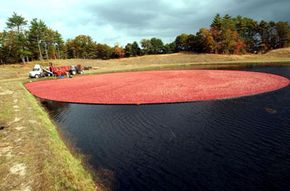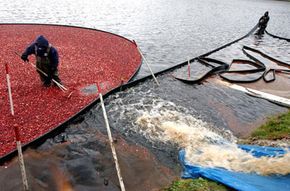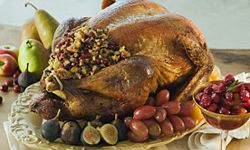What is it about the cranberry that enables it to grow and thrive in a bog? Considering the berry's delicate nature and vibrant ruby red glow, it's hard to imagine that the ideal environment for its survival would be such an unusual and harsh place.
Bogs are one of North America's most distinctive types of wetlands. They're strange ecosystems characterized by thick sphagnum moss, acidic waters, peat deposits and a spongy, mat-like substance on the water's surface. Cranberries thrive best in beds within the bog, which consist of alternating layers of sand, peat, gravel and clay. Cranberry vines produce horizontal stems called runners that may grow up to six feet (1.82 meters) long and can spread profusely over the bog's floor.
Advertisement
Plants that grow in bogs have to contend with a host of unfavorable conditions, but the cranberry plant's durability allows it to survive in this habitat. For example, cranberries need fresh water to survive. Of course, the fact that bogs consist of mostly acidic water represents a challenge to the plant. Luckily, the fruit's woody stems are tough and their small leaves have a leather-like consistency. This enables the plant to retain as much fresh water as possible by restricting the amount of usable water that passes through [source: Johnson]. The plant's fine roots also absorb and use organic nitrogen to survive, despite the scarcity of nutrients in the bog's sterile soil [source: Eck]. What's more, cranberry vines are resilient -- an undamaged one can last indefinitely. In fact, some vines in the cranberry bogs of Massachusetts are more than 150 years old [source: CCCGA].
Cranberries have become a sought-after crop because they're versatile and packed with nutrients and antioxidants. To meet the global demand, farmers must take extensive measures to keep their cranberry bogs in pristine condition to keep their crop strong. In this article, we'll explore farmers' efforts to keep their berries healthy all year long. We'll also see the fruits of the farmers' labor once the fall harvest season arrives.
On the next page, we'll take a closer look at these cranberry bogs and discuss the increasingly pivotal role that man plays in creating these environments.
Advertisement




